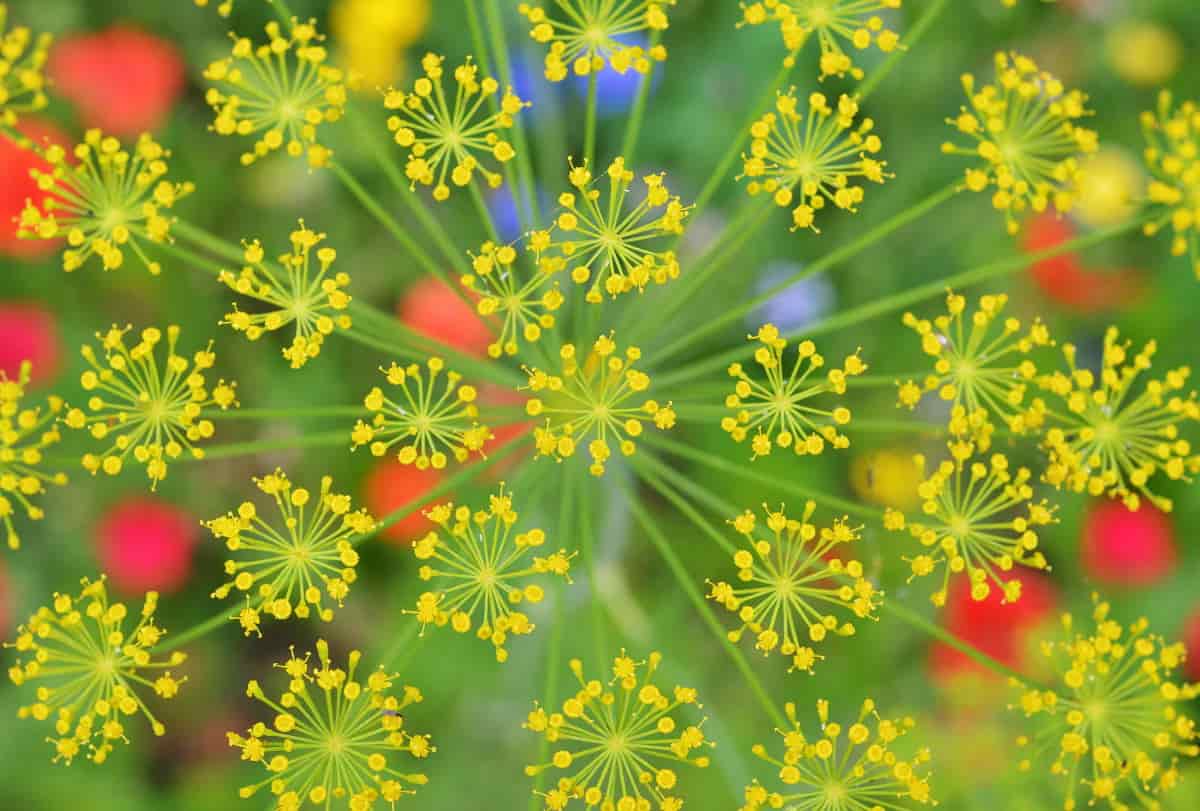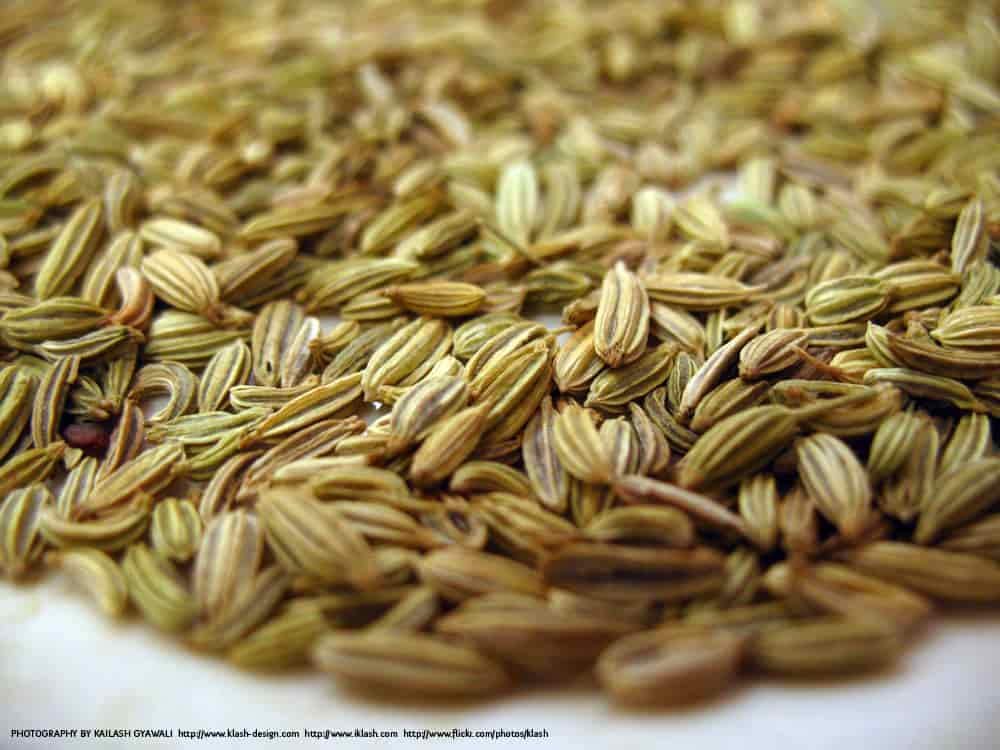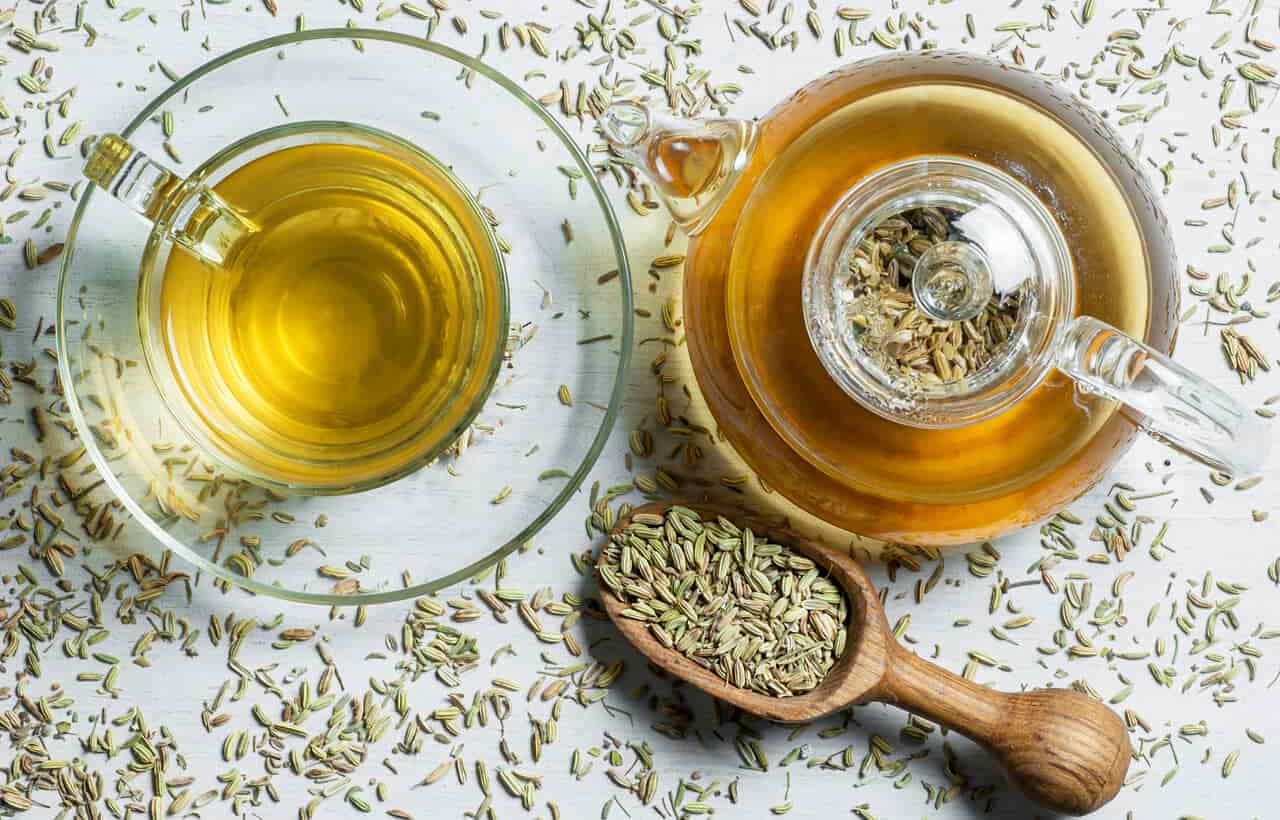With the gluttony of the holidays just around the corner and comfort foods fast becoming the order of the day, it's a great idea to get familiar with some good herbal digestive aids. That's why we've chosen to introduce you to Fennel (Foeniculum vulgare), a potent digestive pharmacopeia that you'll be glad to have on hand after your second helping of pumpkin pie. You can thank us later.
Botany
Fennel belongs to to the Umbelliferae or Apiaceae family, which boasts such other well-known members as carrots, celery, parsley, and dill. It grows up to 5 feet tall, with finely divided fern-like leaves with fleshy sheaths at their basis. The umbels (clusters) of yellow flowers give way to to the ribbed, greenish-colored seeds. While the fleshy base of the plant and stems are both used culinarily, the seeds are the part most often used for medicinal applications, owing to their having the highest concentration of active constituents. The latin name Foeniculum derives from the Latin word for "hay" — a reference to its sweet and pleasant odor.
Growth, Habitat and Harvesting
Fennel is native to the Mediterranean, but is now cultivated throughout Europe, Asia, India, Australia and North America. It grows as a semi-hardy perennial in temperate climates, but can be cultivated as an annual in colder climates. It requires well-drained to sandy soil and full sun. The ripe seeds are collected in the autumn.
Traditional and Modern Uses
Fennel was used widely by both the Greeks and Romans for a variety of applications, ranging from soothing gastrointestinal upsets and menstrual issues to calming coughs. Both cultures believed the herb bestowed strength, courage, and longevity. The herb was also used as an appetite suppressant, as evidenced by the Greek name for Fennel, marathron, which means "to grow thin". This use continued into the Renaissance, where it is documented in the writings of a 17th century botanist as an herb that could "slenderize" those who were overweight. Fennel was also a common ingredient in gripe water, used for colic in babies, and the tea was also gargled as a breath freshener, drunk to expel worms or applied as an eyewash for eye discomforts.
In modern medicine, Fennel is primarily used as a digestive remedy. Owing to its ability to relax smooth muscle throughout the digestive tract, Fennel is particularly helpful in resolving bloating, wind, and cramps. Conversely, some of the volatile oils contained in the seed also help to increase gut motility by stimulating the mucus membranes lining the digestive tract, which can help in cases of nausea or poor appetite.
Fennel is also commonly used to increase milk flow in lactating mothers. The volatile oils responsible for the gut-soothing actions mentioned above easily pass through breast milk, meaning that Fennel not only enhances milk secretions, but can help soothe baby's colic at the same time.
In the respiratory tract, Fennel can help break up chest congestion and facilitate breathing by stimulating and thinning respiratory secretions. As a gargle, it can soothe inflamed gums or a sore throat. Externally, the tea can be applied to irritated skin or used as an eyewash.
In Traditional Chinese Medicine, it's used to dispel cold and regulate stomach function.
Preparations
Dry roasting the seeds helps to release the aromatics and make the seeds easier to chew. Consume a few after meals to aid digestion. The seeds can also be ground and mixed with a little honey or taken in capsules. They can also be extracted in alcohol, glycerine or vinegar or brewed as a tea. Owing to the soothing, pleasant flavor, Fennel is often combined with other herbs to improve their palatability.
WishGarden Remedies Containing Fennel
You can find Fennel doing its thing in our Digestive Rescue GI Normalizer, Digestive Rescue for Kids, Milk Rich, and Colic Ease formulas.
References
- National Geographic Guide to Medicinal Herbs by Stephen Foster and Rebecca L. Johnson.
- A Clinical Guide to Blending Liquid Herbs by Kerry Bone.
Writer Danielle Charles Davies holds a Bsc in Herbal Science from Bastyr University and completed the two-year clinical training program at the Vermont Center for Integrative Herbalism in Montpelier, VT. Her writing has appeared in Taproot, The Journal of the American Herbalist Guild, and Kindred Magazine, among others. She lives in Northern Michigan with her husband, two dogs and eight ducks. She blogs at www.bluemoonkitchen.com.
For educational purposes only. This information has not been evaluated by the Food and Drug Administration. This information is not intended to diagnose, treat, cure, or prevent any disease, or sell any product.
Recommended Products
Further Reading











